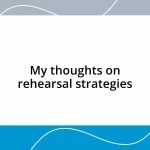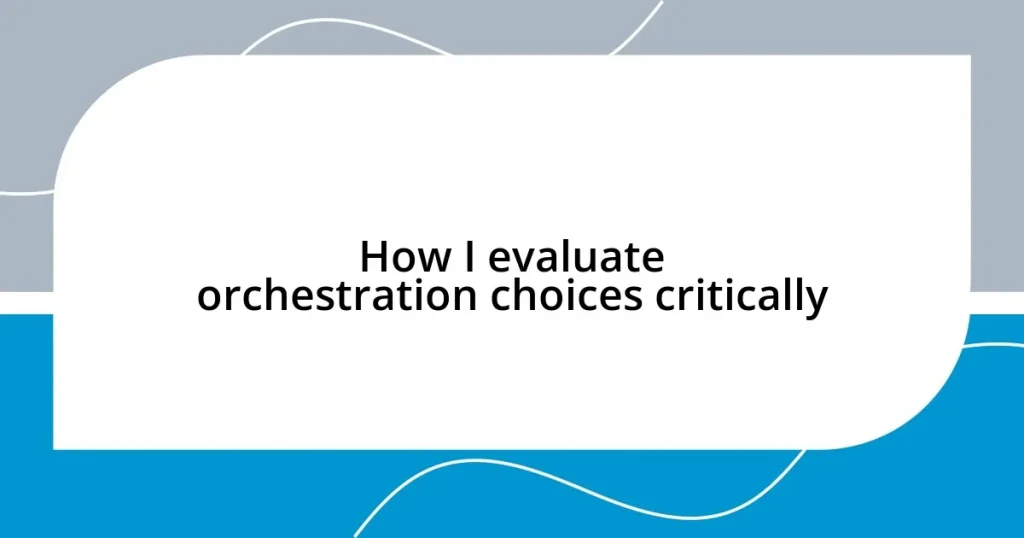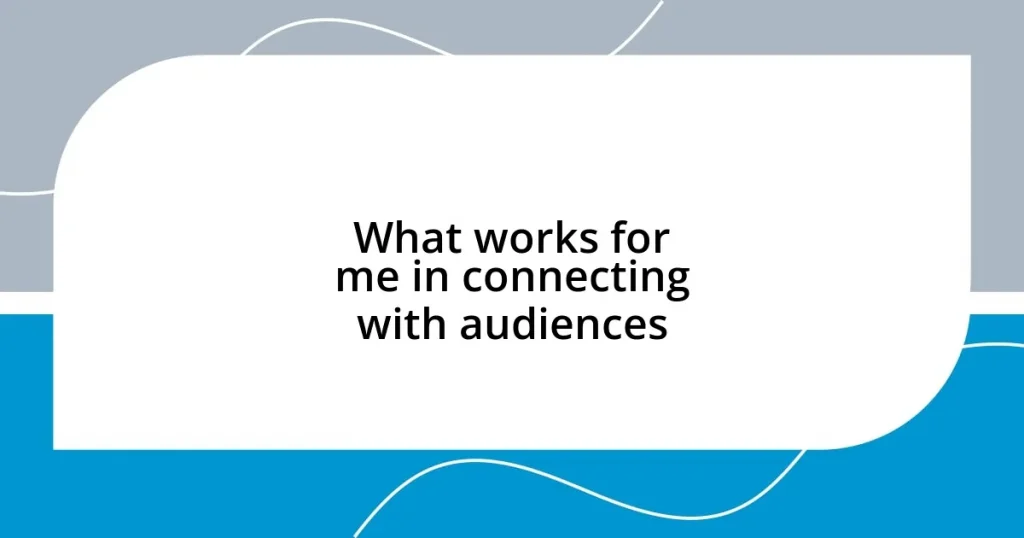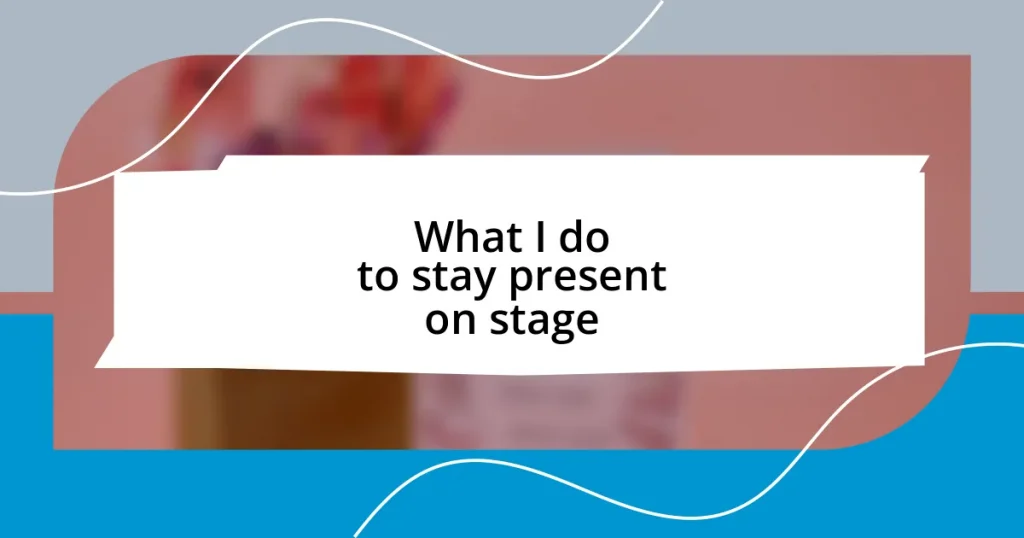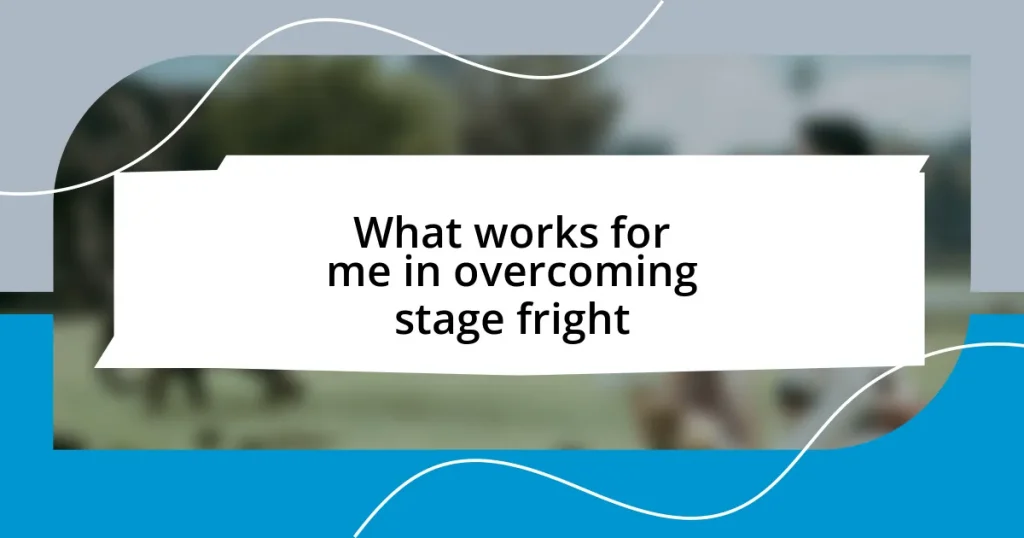Key takeaways:
- Orchestration choices significantly impact the emotional narrative of a piece, with instrument selection shaping the listener’s experience and interpretation.
- Techniques for evaluating orchestration include sonic journaling, comparative listening, and peer discussions, which enhance understanding and foster creative insights.
- Experimenting with instrumentation can lead to innovative results, encouraging composers to explore unconventional choices that resonate deeply with audiences.
- Reflective practices, such as maintaining a journal and seeking peer feedback, are essential for growth in orchestrational decision-making and can guide composers through creative challenges.
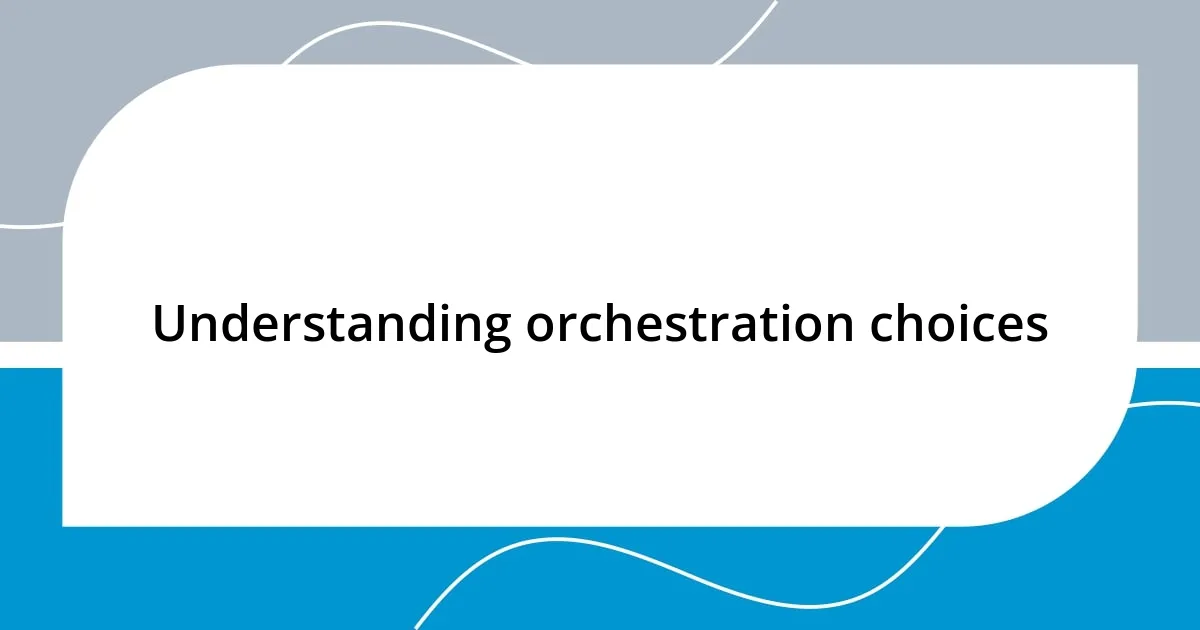
Understanding orchestration choices
Understanding orchestration choices requires a deep dive into both the technical aspects and the emotional landscape of a piece. I remember a time when I was torn between choosing brass or strings for a dramatic section of a composition. In that moment, I asked myself: which choice would better convey the character’s turmoil? It’s these questions that inform our decisions and shape the overall effect of the music.
Delving deeper, I find that orchestration isn’t just about layering sounds; it’s a dialogue between instruments that evokes specific emotions. For instance, while working on a piece featuring a solo clarinet, I discovered how its warm, haunting timbre could express vulnerability, whereas a full string section might amplify that sentiment to a more powerful declaration. It’s fascinating, isn’t it? How one choice can shift the listener’s experience entirely.
Ultimately, I believe understanding orchestration choices means embracing both the intellectual and intuitive sides of music creation. There are countless options to consider, like instrument range, dynamics, and texture, but they all come together to serve a greater purpose. In my experience, every successful composition I’ve been part of began with thoughtful orchestration – it’s the foundation that supports the entire structure.
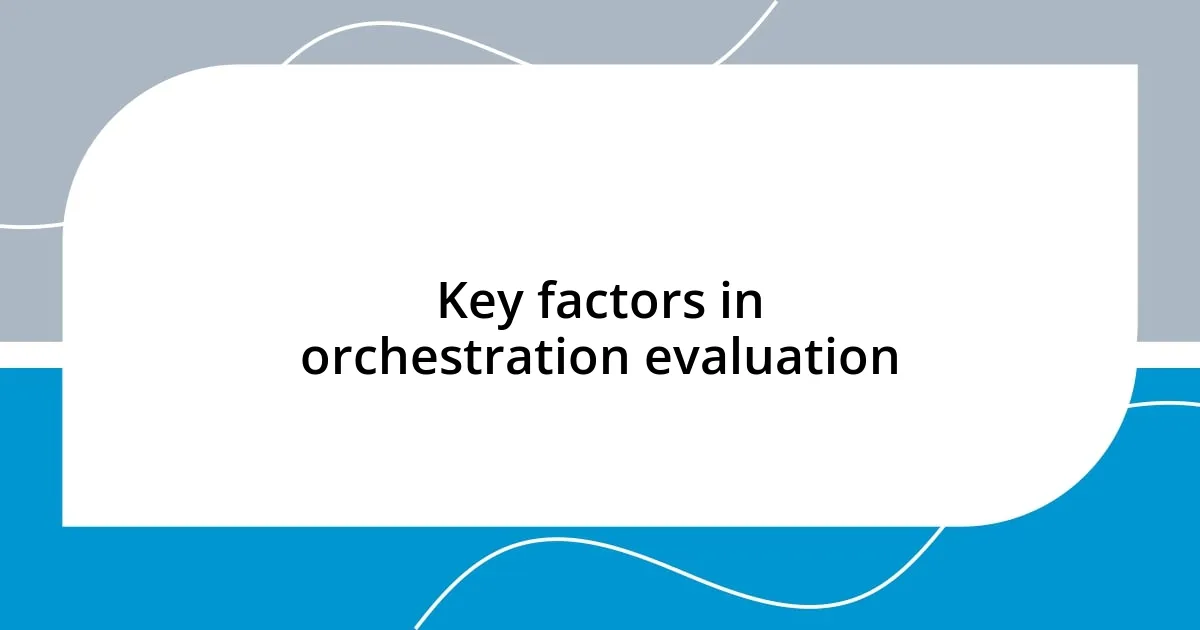
Key factors in orchestration evaluation
When evaluating orchestration choices, I often focus on how each instrument’s unique qualities interact with the overall emotional narrative. For instance, while arranging a piece for a small ensemble, I once favored a delicate flute melody over a more robust oboe line. The flute’s lightness beautifully complemented the piece’s theme of innocence, while the oboe’s richness might have introduced a sense of gravity that didn’t fit. That moment reinforced for me that the emotional intent behind every orchestration decision can truly alter the listener’s journey.
Several key factors influence my orchestration evaluations, including:
- Instrument Compatibility: Understanding how different instruments blend or contrast can elevate the music.
- Emotional Impact: Reflecting on the feelings I want to elicit helps guide my choices.
- Thematic Consistency: Ensuring that the orchestration aligns with the piece’s central message is crucial.
- Technical Limitations: Considering an instrument’s range and capabilities prevents unnecessary frustration in performance.
- Balance and Texture: Striking a balance between instruments leads to a fuller, more cohesive sound.

Techniques for critical analysis
When I approach critical analysis of orchestration choices, I often utilize a technique I call “sonic journaling.” This involves listening to a piece multiple times and jotting down my emotional reactions alongside specific instrumentation choices. For instance, I vividly recall analyzing a film score where the sweeping strings stirred feelings of nostalgia while the sharp brass introduced tension. This method not only helps me to document my thoughts but also provides valuable insights that shape my final conclusions.
Another technique I find effective is comparing orchestration choices across different recordings of the same piece. One time, I noticed how a renowned conductor lightened the orchestral texture by using fewer instruments in a famous symphony, allowing the woodwinds to shine. In contrast, another version heavily favored the brass, creating a more intense experience. This comparison can illuminate how various interpretations lead to entirely different emotional responses, ultimately enriching my understanding of the piece.
Engaging in peer discussions about orchestration is also a powerful analytical technique. I remember a workshop where we dissected our pieces in small groups. Sharing our perspectives not only opened my eyes to alternative choices—like opting for a double bass instead of a cello in certain passages—but it also deepened my appreciation for the collaborative nature of music-making. Each conversation becomes a learning opportunity, enhancing my overall approach to orchestration evaluation.
| Technique | Description |
|---|---|
| Sonic Journaling | Documenting emotional reactions to instrumentation in a personal journal while listening. |
| Comparative Listening | Analyzing different recordings of the same piece to explore varying orchestration choices. |
| Peer Discussions | Engaging with others to share insights on orchestration choices and deepen understanding. |
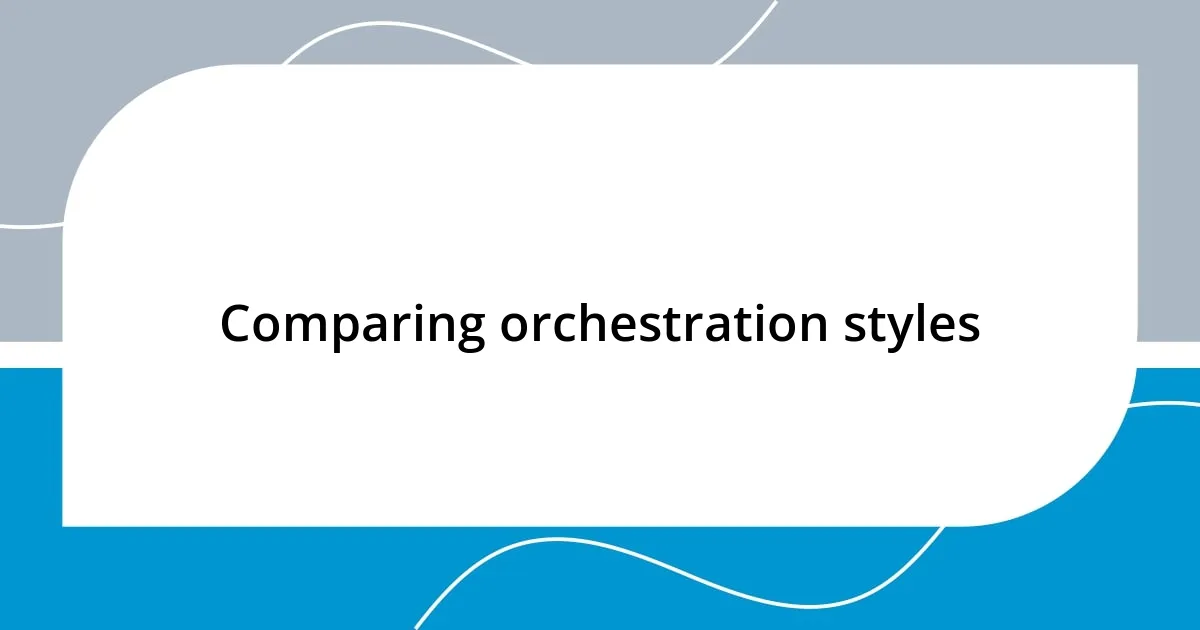
Comparing orchestration styles
When it comes to comparing orchestration styles, I always find it fascinating to analyze how different choices can define the essence of a piece. For example, during a recent study with various orchestras, I heard a rendition of a classic orchestral suite, where one conductor opted for a minimalistic string section. The delicate approach highlighted the intricacies of each instrument’s voice, and I couldn’t help but wonder: does less really become more in orchestration?
I vividly recall a time when I was experimenting with orchestration for a modern ballet. One arrangement prominently featured woodwinds, which imparted a lighter, more whimsical texture, while another leaned heavily on brass, creating a robust and majestic sound. It struck me how each style evoked distinct emotions—was the buoyancy of the woodwinds more suited for the playful choreography, or did the brass’s boldness resonate with the dramatic theme of the dance? This directly led me to reflect on the purpose behind each orchestration decision.
Engaging in side-by-side listening of different interpretations has also been enlightening. I remember isolating one movement of Beethoven’s Fifth Symphony, exploring a version that favored the timbre of cellos to bring forth somberness, while another emphasized the bright, piercing sound of trumpets, which exuded triumph. This not only deepened my understanding of disparate orchestration styles but also invited me to consider how the listener’s experience might change based on these choices. It’s intriguing to think—how do our individual preferences shape the way we perceive different orchestration styles?
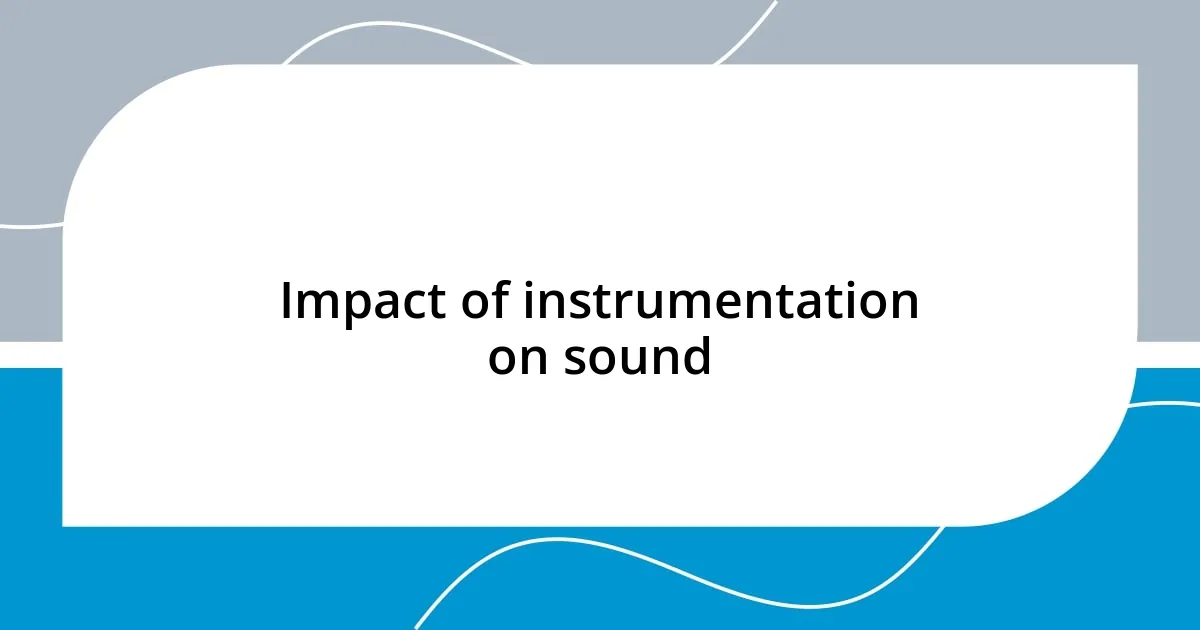
Impact of instrumentation on sound
The choice of instrumentation astounds me with its ability to craft distinct soundscapes. I once attended a concert where the composer used a single harp to create a hauntingly beautiful atmosphere. As the notes echoed, the delicate plucking contrasted deeply with the driving force of a full brass section that followed. It’s moments like these that lead me to ponder: how does a single instrument shape our emotional landscape within a larger orchestral palette?
Every time I experiment with different instrument combinations, I discover something new about sound’s potential. I remember scoring a short film, where I decided to balance eerie synths with a string quartet. The ethereal quality of the synths complemented the emotion-laden vibrations of the strings, pulling the audience deeper into the narrative. This experience made me question, just how much can the richness of sound influence a viewer’s overall experience?
Instrumentation isn’t merely the choice of instruments; it’s about voice and character as well. Once, during an orchestration class, we listened to a symphonic piece where the composer strategically used brass to symbolize power and strings to evoke vulnerability. It was a striking contrast that got me thinking: isn’t it fascinating how instrumentation can guide the listener’s interpretation of a story without saying a word? This realization continuously shapes my orchestration choices, as I aim to harness that power every time I compose.
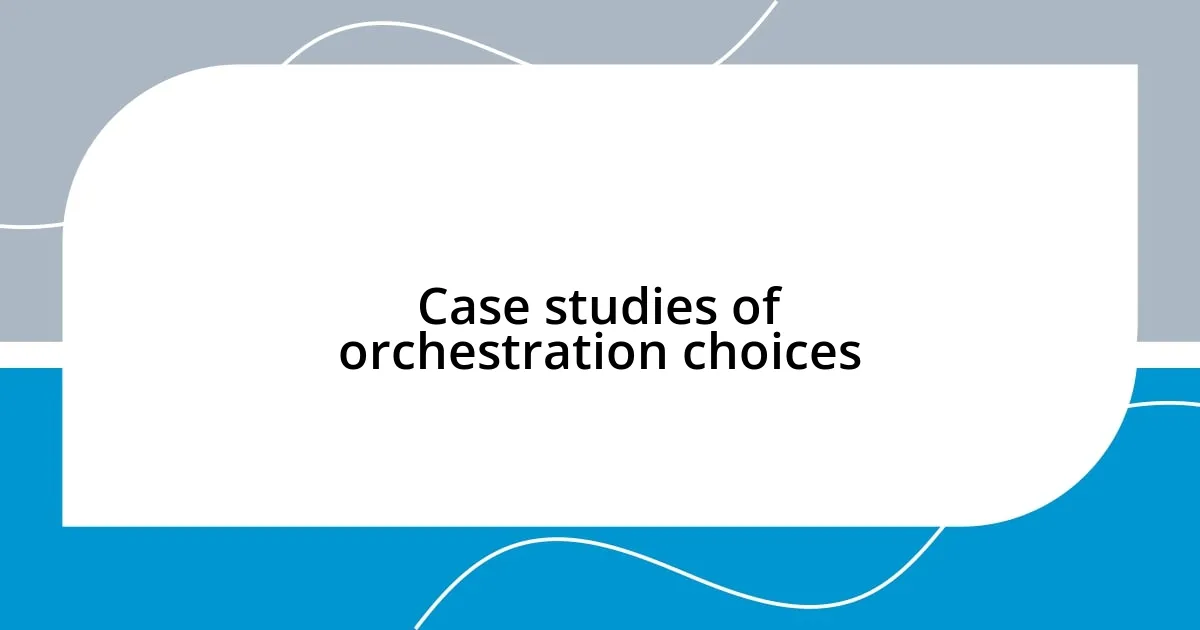
Case studies of orchestration choices
One memorable case study that stands out to me is my experience working on a community musical. The director chose to integrate a broader range of instruments than traditionally found in such productions, incorporating less common choices like the ukulele and cajón. This unexpected pairing struck a chord with the audience, creating an intimate vibe that transformed familiar songs into something fresh and inviting. It made me wonder: what if we all stepped outside the conventional and allowed our creativity to dictate our orchestration choices?
In contrast, I once attended a performance of Mahler’s Symphony No. 1, where the conductor implemented an entire percussion section filled with unconventional instruments like steel drums. Initially, I was skeptical—would this work? To my surprise, this choice infused the symphony with a vibrant energy rarely experienced in that piece. Reflecting on this, I thought about the risks we take in orchestration and how they can lead to groundbreaking interpretations that ultimately deepen the listener’s appreciation for the music.
When I was diving into orchestration for a contemporary opera, I deliberately chose to limit the brass section to just one player. This choice made the sound more ethereal and intimate, allowing the vocalists to shine. I realized then that less can sometimes speak volumes. It made me reflect: how often do we underestimate the power of simplicity in orchestration? Ultimately, those choices not only shaped the performance but also invited the audience to engage with the music on a personal level.

Best practices for effective evaluation
Evaluating orchestration choices is all about being intentional and reflective. I’ve found keeping a journal specifically for my orchestration experiments to be invaluable. When I jot down the reasoning behind each instrument choice, it not only clarifies my vision but also allows me to revisit those thoughts when I’m stuck. Have you ever considered how your past choices can inform your current projects? This practice has certainly guided me through creative blocks.
Another best practice is to seek feedback from peers. I remember sharing a piece with a group of fellow composers, and one of them pointed out how I’d overloaded the strings in a particular section. That insight taught me that collaboration can unveil perspectives I might overlook. Engaging in open dialogues about orchestrational choices fosters growth and broadens our understanding of different sound combinations. Have you tried sharing your work with others? You might discover new pathways in your music!
Most importantly, always listen actively. I make it a point to attend live performances regularly, soaking in how different orchestrations feel in real time. One night, I was mesmerized by a small ensemble that transformed a familiar melody into something extraordinary simply because they played with such a nuanced understanding of dynamics. It struck me that evaluating orchestration is not just an intellectual exercise; it’s an emotional journey that requires us to feel the music deeply. How often do you immerse yourself in live music, allowing it to inspire your newfound insights?








